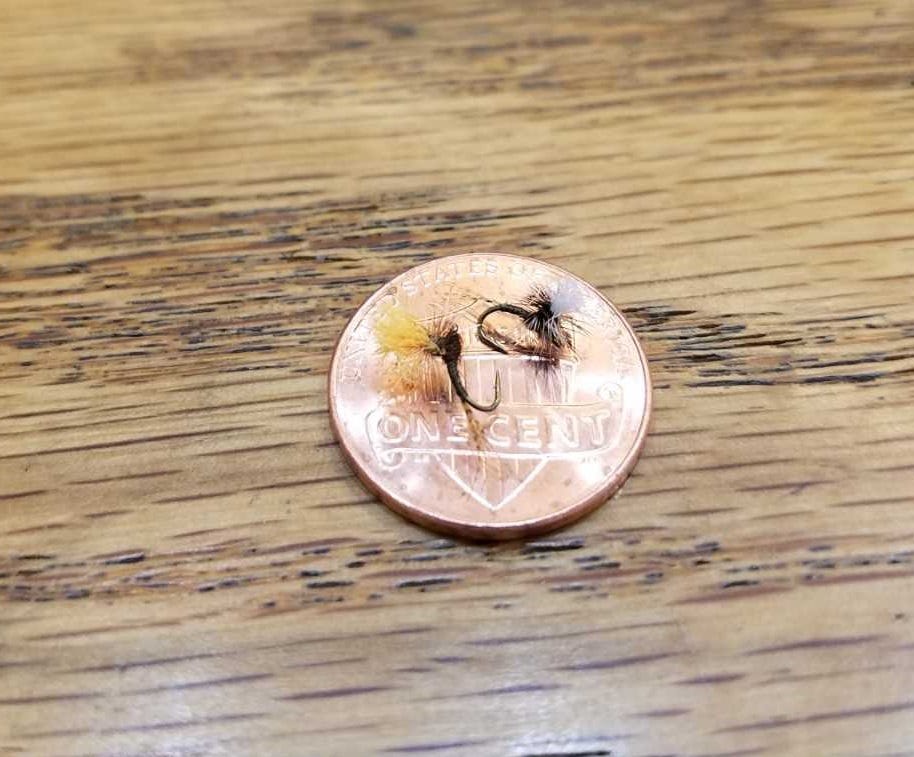Match the Hatch: Tricos


Trico’s
Reliable and sometimes heavy hatches of the diminutive Trico mayfly bring many trout to the surface. In key areas, large pods of sipping trout will form. It can be an awesome sight. It can also lead to major angling frustrations. Trout feeding on Trico’s are generally very selective.
Trout begin feeding on hatching female duns in the early morning, eventually switching to the male spinners after the daily mating swarms occur. Later in the day, they might focus on female spinners. Sometimes, they only want a male or female sunken spinner. Anglers must selectively match a very tiny fly and dead drift it very close to their target. Basically, right on the fish’s nose. Casts that are not precise and delicate will blow it, putting a fish or an entire pod on alert. Then it will get really difficult. Some anglers are in love with the Trico challenge. Others curse it.
Nymphs
It’s very likely that trout will eat a bunch of Trico nymphs, but if you search for them in most fly shops, you will likely come up empty. Size 20-24 mayfly nymphs can fit the niche of the tiny Trico. A size 22 slender-bodied Pheasant Tail is a pretty good match too, but it’s primarily the emergence, adult and spinner game that gets all the attention.
Emergence
Male Tricos hatch during the night, so they are of little importance. It is the morning female hatch that often offers the best Trico dry fly fishing. Little olive females will provide individual targets to fish just waking up for their daily feed.
Duns
An olive parachute is a pretty good imitation to fish for the emerger/dun phase. You can call it an emerger, a cripple, or a dun but it’s the fly that will be on my line in the morning when the hatch is on. In size #22 and #24 and given an accurate cast and drift, it will generally provide lots of eats. Landing big strong fish with the tiny hook is another thing.
Last summer, my friend Kevin and I were posted up on a pod of fish that were eating Trico’s like it was going to be their last meal. I caught the first fish on a #20 and landed it easily. Then I could not coax another. Kevin proceeded to hook fish after fish on a #24. I finally switched to his little olive para emerger and began to hook fish regularly. We figured we had pierced at least 40 fish before we decided to float out. As we floated out, Kevin hooked a final fish and we landed it on the drift.
Spinners
Unless they are up early, most anglers end up seeing and fishing the male spinner fall. The females that hatch in the morning meet up with the males that hatch in the evening. Then they get busy in mating swarms that look like swirling cyclones of smoke. After mating, the males fall spent to the water while the females land in the bushes to develop their eggs.
The male spinners look like black dots with clear wings spread out. Most anglers on the Missouri River post up well above their targets and then drift their tiny spinner imitations, fly first, to the fish. If the fish won’t eat the fly on top, sink it or use a sunken spinner pattern with a small dark bead.
I have had some success fishing upstream to rising fish while wading. Utilizing a long leader and placing the fly directly on the rings of rising fish can be the best way to fish near the bank, or over very shallow flats.
The female Trico’s will deposit their eggs later in the day and then add their bodies to the spinner drift. Most anglers never notice the females, but sometimes the fish will be focused on them.
Keys to the game
Your primary hatch matchers should include an olive female emerger/ dun pattern, an olive female spinner pattern, and a black male spinner pattern. You also might want to add a cluster pattern to use as an indicator, or a primary fly when spinner falls are really dense.
Accuracy in casting is critical. Fish might move a couple inches for a dun early in a hatch, but when it comes to the spinner, sometimes you will literally need to put it right into their mouth. They will often be feeding by tipping up and opening their mouths continuously in a precise line.
Depending on visibility, you might need a larger fly to help you find your Trico. Sometimes a caddis, or a beetle, or something totally different; will even draw a divergent eat from the Trico buffet. Be aware, however, that on pressured fish, the larger fly might put the fish on immediate alert. The really challenging fish will be feeding steadily on top, but stay constantly on the move.
Have patience. If you are fishing to rising fish and they keep rising, you’ll need to focus on your timing and your fly placement.
I prefer 5X fluorocarbon tippet if I can get away with it, but will sometimes fish 6X to get more eats. A moderate action 4-weight fly rod is an ideal tool for fishing minuscule Trico’s on wispy tippets.
Remember to have fun.
